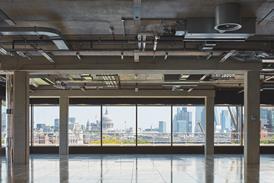- News

All the latest updates on building safety reformRegulations latest
- Focus
- Home
- News
- Focus
- Comment
- Events
- CPD
- Building the Future
- Jobs
- Data
- Subscribe
- Building Boardroom
Slowly does it: where is this elusive growth for construction?
By Dave Rogers2025-08-08T06:00:00

Economic recovery is proving much slower than construction businesses had hoped but some experts point to signs the long term outlook will improve, eventually …
Two different sets of data about the health of the construction sector came out this week – one much more gloomy than the other.
The bellwether S&P Global UK Construction Purchasing Managers Index slumped to 44.3 in July, down from 48.8 in June, which, the report says, was a reverse last seen when the country was in the grip of its first covid-19 lockdown more than five years ago.
It was the steepest fall since May 2020 with all three sectors – housebuilding, civil engineering and commercial – going backwards, with buyers citing site delays, lower volumes of incoming new business and weaker customer confidence for the drop. It added that optimism for the year ahead had also dwindled.
Already registered? Login here
To continue enjoying Building.co.uk, sign up for free guest access
Existing subscriber? LOGIN
Stay at the forefront of thought leadership with news and analysis from award-winning journalists. Enjoy company features, CEO interviews, architectural reviews, technical project know-how and the latest innovations.
- Limited access to building.co.uk
- Breaking industry news as it happens
- Breaking, daily and weekly e-newsletters
Get your free guest access SIGN UP TODAY

Subscribe now for unlimited access
Subscribe to Building today and you will benefit from:
- Unlimited access to all stories including expert analysis and comment from industry leaders
- Our league tables, cost models and economics data
- Our online archive of over 10,000 articles
- Building magazine digital editions
- Building magazine print editions
- Printed/digital supplements
Subscribe now for unlimited access.
View our subscription options and join our community


















